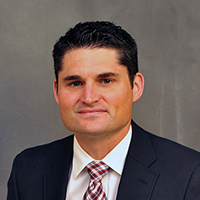When William Cornwell, MD, MSCS, came to Colorado eight years ago, he told Diane Branham, RN, BSN, about his plans to study the heart and heart failure. He wanted to observe healthy individuals exercising with a catheter inserted in their heart. “Her eyes got really wide,” recalls Dr. Cornwell.
He has been doing exactly as he planned at the Colorado Clinical and Translational Sciences Institute (CCTSI), conducting studies and adding to the knowledge clinicians have about how the heart and lungs perform while exercising on top of a mountain such as Pike’s Peak (elevation 14,115 feet). Cornwell, an associate professor of cardiology at the University of Colorado School of Medicine, collaborates with Branham, the Nurse Manager, and a team of research nurses at the Adult Clinical Translational Research Center (CTRC) at the CCTSI.
“As cardiologists, we frequently see people who travel to Colorado from low altitudes – they fly to Denver, drive straight to the mountains for a vacation without any time to acclimatize, and unfortunately have heart attacks requiring immediate transfer to our hospital. When people go to the mountains, they are going to have fun by doing things like hiking, cycling or skiing. These are all types of exercise – and we don’t know enough about how the combination of hypoxia and exercise impacts the cardiovascular system to increase the risk of heart attacks among at-risk individuals, particularly people with risk factors who are traveling here from low altitudes,” said Cornwell, who is also a cardiologist in the UCHealth Advanced Heart Failure Clinic.
Cornwell said doctors know a lot about how low-oxygen (or hypoxic) environments impact the body. But when people who do not exercise regularly and may be in their 50s or older put additional stress on their body by exercising in these environments without sufficient time to adjust to the altitude, it can be a perfect storm for bad things to happen.
The study, recently published in the Journal of Physiology, is Cornwell’s effort to learn more about how the heart and lungs behave during hypoxic exercise without much time to acclimatize. The right ventricle has not been as extensively studied as the left. He said that when you have hypoxia, things happen in the lungs that can impact the right side of the heart. The pressure goes up. Blood vessels constrict, which can make it difficult to pump blood to the lungs.
He said there is some uncertainty about whether the right side of the heart can adapt quickly. Some publications have suggested the right side of the heart does ok; others suggest it struggles. The overwhelming majority of studies have used echocardiogram, and while helpful, has inherent limitations when compared to other techniques.
“Using catheterization provides more detailed information, measuring every heartbeat and every breath; it gives you a very clear picture of what is happening inside the heart and lungs,” he said. “We found that the healthy heart has an enormous amount of “reserve in the tank”, so to speak. This means that at least the healthy heart can significantly augment its ability to contract and provide blood to the lungs, even when exercising in the setting of acute hypoxia.”
Finding Research Participants
Cornwell said that recruiting healthy individuals to participate has been fairly easy. Colorado is one of the healthiest states in the nation and many people take their health and exercise very seriously.
“They volunteer because they are interested in contributing and giving back to science. They are also interested in their health and learning about their bodies,” Cornwell said. “I, myself have exercised with a catheter in my heart. I have had a chance to learn a lot about how my body works from participating in studies like this in the past.”
Guidance for Individuals Visiting High Altitudes
Though Cornwell’s study demonstrated the right side of the heart can significantly increase its ability to contract, he emphasizes that exercising in the mountains may not be as benign as one may think.
“If you have heart or lung disease, or any risk factors that are potentially of concern, it is a good idea to meet with your doctor. Ask if there is any additional testing, additional medications or changes to your medications, that should be considered before you go to the mountains to exercise. Have an itinerary in place, know where you are going to be and where resources are available in case of an emergency. Have an evacuation plan. These are the kinds of questions you need to be thinking about if you are going to the mountains and are at all at risk,” Cornwell said.
Looking ahead, he plans to take what he has learned in healthy adults and study populations with diseases such as heart disease, hypertension, heart failure and chronic obstructive pulmonary disease (COPD). Some of these projects are already underway. He notes that none of this research would be possible without the highly trained and experienced team of research nurses – or the CTRC. “Resources in the CTRC allow you to look at multiple organ systems simultaneously while someone is exercising by incorporating highly innovative technologies and bioinformatics systems– this is unparallelled,” Cornwell said.



-1.png)
